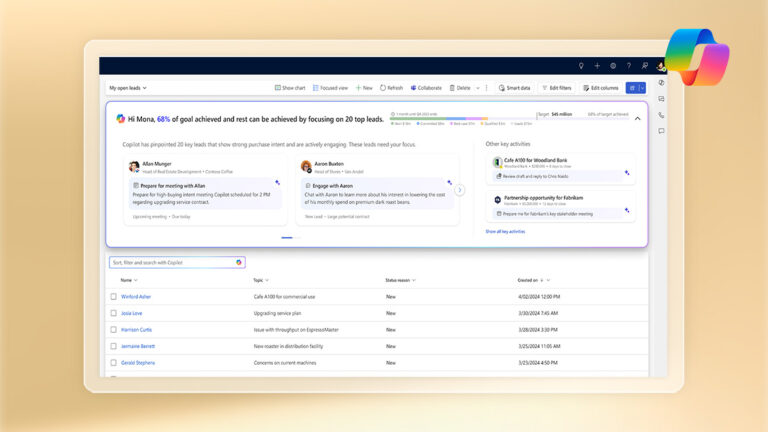The holiday season ended with better than expected online sales. So, can we look back at 2022 as a success? It’s complicated. Retailers had to raise prices and increase discounts to drum up demand — and shoppers paid close attention. Now we’re reaching the inevitable conclusion to that game: the season of many returns.
Online sales in November and December were flat globally ($1.14 trillion) and up 5% ($270 billion) in the U.S. from a year earlier. Global sales were pulled down by weak performances across Europe, where economic turmoil contributed to an 8% decline in growth, and in Australia and New Zealand, which saw growth fall 7% amid a digital rebalancing.
Some product categories worldwide were more popular than others with online shoppers. Active footwear continued to be a top performer, with sales growing 31% from a year earlier, followed by general footwear growing 15%. As travel kicked back into gear, so too did general handbag and luggage purchases, as online sales increased 12%. Meanwhile, toys and learning products (-12%) and furniture (-11%) saw the largest decrease in online sales across all categories.
But there was much more to this holiday shopping season’s results. From discounting strategies to the role of returns and fulfillment, let’s look at the top five headlines of the season and what they mean for retailers in 2023.
Create experiences that lower costs and boost customer retention
Keep shoppers coming back by reimagining your brand loyalty program.


1. Discounts shaped holiday demand
It was a great year to be a bargain hunter. After two years of lackluster discounting due to strong consumer demand and limited supply, discounting returned with a bang. Average discount rates in November and December stood at 21% globally (up 11% from a year earlier) and 23% in the U.S. (up 10%).
Retailers held tight on discounts until later in the season to preserve margins, and this approach had a direct and significant impact on demand. Here’s how the promotional calendar shaped sales:
| What retailers did | What shoppers did |
|---|---|
| Early season: Retailers held back on early discounts. In the first two weeks of November, global average discount rates were 10% lower than 2019 averages. | Shoppers remained patient amid low discounting, so online sales decreased by 10% YoY globally. |
| Pre-Cyber Week*: Discounts began to improve as Cyber Week approached, but didn’t materially pick up until the weekend. | Online purchases began to pick up the weekend before Cyber Week, with growth of 9% globally and 10% in the U.S. |
| Cyber Week: Discounts peaked during Cyber Week at 27% globally and 30% in the U.S., up 8% and 7%, respectively, from 2021. | Online sales growth peaked at 2% globally and 9% in the U.S. |
| Late season: Discounts fell below 20% for the remainder of the season. | Cyber Week’s heavy discounting pulled forward 3% more sales globally and 4% more sales in the U.S. |
*Pre-Cyber Week in 2022 ran Tuesday, Nov. 15 – Monday, Nov. 21.
What this means for 2023. Shoppers are continuing to show price sensitivity across all income and age levels worldwide. For 2023, lean into artificial intelligence (AI) tools that let you deliver the right product at the right time at the right price to preserve margin, while helping you retain loyal shoppers that migrated over the course of the pandemic.
2. Holiday sales were driven mostly by price increases
Although the retail industry experienced solid online sales performance this holiday, nearly all growth was driven by increased prices rather than increased shopper demand. Prices worldwide in November and December were up 5.5% and 5.7% in the U.S from 2021. While we’re finally starting to see slowing inflation — reflected in average selling price — people are still buying fewer items at higher prices. Meanwhile, order volumes fell across this period by 4% globally and were flat in the U.S.
The holiday shopping season results showed moments when discount rates spiked and resulting demand drove growth. This occurred globally during Pre-Cyber Week, where order volumes grew 3% from the same period in 2021. In the U.S., order volumes turned positive during Pre-Cyber Week, Cyber Week, and toward the end of the season as last-minute shoppers leaned on buy-online, pick-up in store (BOPIS) options.
What this means for 2023. All the growth moments this holiday occurred during periods of heavy discounting. Consumers are far more price-sensitive than they’ve been over the past several years — even before the pandemic — and this sensitivity will continue throughout 2023. Although loyalty is dictated largely by price, other factors also are critical during periods of challenging economic conditions:
- Value: Once a code simply for price, it now comprises the value of time, experience, and the environment.
- Convenience: People have been conditioned to expect frictionless experiences across channels.
- Service: Shoppers expect personalized and fast service via the channels of their choice.
Get articles selected just for you, in your inbox
3. Returns and flexible fulfillment options bookended late-season demand
While discounts dominated the early half of the season, BOPIS and returns defined the latter half. Nearly one out of every five online orders placed globally this holiday season was via BOPIS. The share of BOPIS orders remained steady until the ground-shipping cutoff on Dec. 14, after which BOPIS usage climbed daily and peaked at 35% of all orders on the Friday before Christmas. Flexible fulfillment options were also a performance differentiator near the end of the season. In the final days leading up to Christmas, U.S. companies offering BOPIS grew their online sales nearly seven times faster than those without this fulfillment option.
At the same time, lowered consumer confidence and discretionary spending made consumers think twice about their purchases. Returns nearly doubled the week after Cyber Week compared to the previous year and remained high throughout December. Overall, 13% of orders were returned in November and December, a 63% increase over 2021. December continued to have the greatest return rates: 16% of all orders processed were returns. Unlike 2021, where more purchases were returned after Christmas, this year returns occurred during the last two weeks before Dec. 25. This may have been early-bird shoppers returning products to buy them back at a steeper discount.
What this means for 2023. The demand for creative fulfillment models and flexible returns is likely to remain. Consumers want a more cohesive shopping experience across digital and physical touchpoints and companies. But as they become more discerning about discretionary spending, return rates will also rise, potentially undermining your margins. Here are some ways you can reduce returns:
- Improve your product detail pages: Give consumers the product information they need to make smarter decisions with reviews, videos, images, and forums.
- Rethink return policies: Consider curtailing return windows and offering final sales on heavily discounted items.
- Refine store processes: Make it easier to exchange or purchase new items by offering personalized product recommendations.
Trending Articles

How You Can Use MuleSoft and Genie Customer Data Cloud to Take Automation to the Next Level
5 min read

Salesforce Certification Prep: 4 Ways to Get Certified for Less!
4 min read
4. Consumers embraced mobile and social for browsing and buying
A return to holiday travel also meant a renewed role of mobile in the shopping journey. Mobile share of traffic and orders peaked at new highs after a lull the last two years. Globally, mobile traffic share reached 75% throughout the season compared to 73% in 2021, with the highest week being Christmas and Boxing Week (Dec. 20 – 26) at 78%. Mobile order share grew from 60% in 2021 to 63% throughout the 2022 season, with usage peaking at 68% during Christmas and Boxing Week.
Social traffic referring to retailers’ sites hit an all-time high during Cyber Week, growing 23% from a year earlier globally and representing 12% of all mobile traffic. Consumers in APAC (excluding Australia, New Zealand, and Japan), Italy, Belgium, and the U.S. were far more social than those in other areas of the world, according to our holiday shopping season results.
What this means for 2023. Expect consumers to spend even more time on mobile — engaging with social, messaging, and other apps — to connect, communicate, and shop. Here are some ways to engage consumers as they increasingly shop at the edge of retailers’ virtual and physical four walls:
- Social commerce: Continue to break down the gap between inspiration and purchase by embedding the Buy button on third-party platforms.
- Mobile payments: Mobile order share still lags behind traffic. Make the mobile checkout experience quicker and more user-friendly.
- Mobile speed: Optimize mobile site speed to cater to consumers on the go. According to the Site Speed Standard 2022, a one-second faster page load on mobile equates to 5.9% conversion lift.
5. Consumers chose automation for customer service
Consumers and retailers leaned into automation on some of the biggest online shopping days of the year, saving agents time for complex order-servicing issues and driving customer loyalty. Chatbot messages globally increased 48% in November and December compared to the same period in 2021. Holiday shoppers were most likely to use chatbots the week after Cyber Week, when 16% of all chatbot engagements took place.
What this means for 2023. Automation will be critical for organizations, as 2023 may be rife with economic uncertainty. Not only will automation decrease costs and improve margin, but it will also improve customer satisfaction. Here are some quick ways to implement automation this year:
- Chatbots: Consumers have lots of information at their fingertips, so serving them quickly is a must.
- Case routing: Automate routing to get cases to the right agents more efficiently.
- Intelligent segmentation: Use AI tools that continually assess and segment customers to make sure your messaging is relevant.
If there’s one lesson we learned from 2022, it’s that the consumer is in the driver’s seat. Consumer preferences changed on a dime, which required retailers to quickly pivot more than once. As economic uncertainty continues in 2023, retailers that listen to their customers and respond by redefining business processes will come out stronger than ever. The opportunities lie in bridging the gap between physical and digital channels, automating and infusing AI into the customer experience, and building loyalty through connected and personalized journeys.
Achieve ROI by lowering costs and increasing customer loyalty
Learn the keys to retail success in our new report.



2022 Salesforce Holiday Insights and Predictions Methodology
Salesforce delivers retail success now with data and insights from the shopping behavior of consumers around the world. To help retailers and brands benchmark holiday performance, Salesforce analyzes aggregated data to produce holiday insights from the activity of over 1.5 billion global shoppers across more than 64 countries powered by Commerce Cloud, in addition to Marketing Cloud and Service Cloud data from retailers. Salesforce’s holiday data set includes 24 of the top 30 U.S. online retailers on the 2021 Digital Commerce 360 list and uses publicly available third-party data sources.
To qualify for inclusion in the analysis set, a digital commerce site must have transacted throughout the analysis period, in this case Oct. 1, 2019, through Dec. 31, 2022, and met a monthly minimum visit threshold. Additional data hygiene factors are applied to ensure consistent metric calculation.
The Salesforce holiday predictions are not indicative of the operational performance of Salesforce or its reported financial metrics including GMV growth and comparable customer GMV growth.











